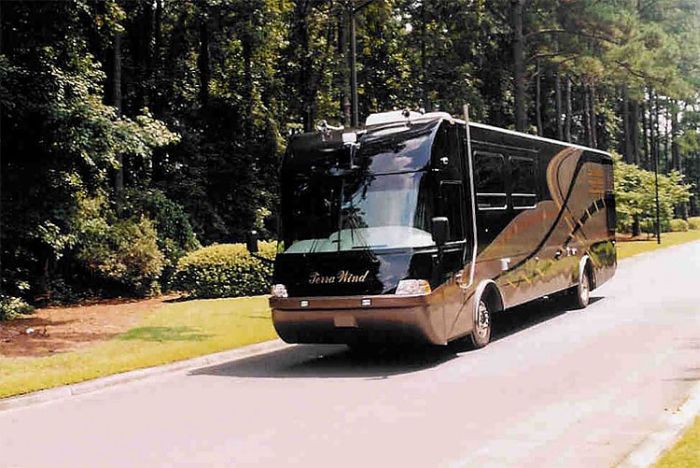|
|
Luxurious Amphibious Bus
|
Some light tanks such as the PT-76 are amphibious, typically being propelled in the water by hydrojets or by their tracks. In 1969, the U.S. Army rushed the new M551 Sheridan to Vietnam. This 17 ton light tank was built with an aluminium hull, steel turret and gun (although the 152 mm gun was called a "launcher" at the time), and could swim across bodies of water. The M551 upon arrival in Vietnam began replacing the M48A3 Patton in all cavalry squadrons, leaving only the M48A3 in the U.S. Army's three armored battalions in Vietnam, the 1/77th, 1/69th, and the 2/34th Armor. The Sheridan needed no modifications for river crossings, crewmen simply raised the cloth sides that were tucked inside rubber tubes along the hull's upper edges, raised the driver's front shield which had a acrylic glass window, the driver turned on his bilge pumps, shifted his transmission lever to water operations and the Sheridan entered the water. For newly arrived Sheridans, this might work as engineered. For "war weary" M551s, the driver's window was often "yellowed" and/or cracked as to obscure his vision, and the rubber tubes that contained the rolled up side sleeves were often cracked and/or frozen into place. The Sheridan could still cross a body of water, but like its swimming cousin, the M113 APC (Armoured Personnel Carrier, also built of aluminium) the river had to be narrow, less than 100 yards (100 m). In all cases, the bilge pumps had to be working properly, and even then by the time the Sheridan or the APC reached the other side, water would often fill the insides up to their armoured roofs, spilling through the hatches' cracks and emptying onto the earth once safely ashore. Often a fold down trim vane is erected to stop water washing over the bow of the tank and thus reducing the risk of the vehicle being swamped via the driver's hatch.
- Multi-unit
The unique capability that distinguishes multi-unit vehicles from single unit ones, is the ability to help each other. According to a 1999 article in Military Parade magazine, multi-unit, all-terrain transport vehicles were first proposed by the British in 1913, and by the 1950s, over 40 types of articulated tracked vehicles (ATVs) were in production. The articulated tracked concept is chosen primarily for its combination of high maneuverability, cross-country abilities, and remarkable load-carrying capacity. In some cases the design is made amphibious, giving them all-terrain capability in the truest sense. Usually the front unit houses at least the engine, gearboxes, fuel tank(s) and the driver's compartment, and perhaps there is some space left for cargo or passengers, whereas the rear unit is the primary load carrier.
Examples of this concept are the Russian Vityaz DT-(10/20/30)P models, the Swedish Volvo Bv202 and Hagglunds Bv206 designs, and Singapore Bronco ATTC (All-Terrain Tracked Carrier).
|
|









